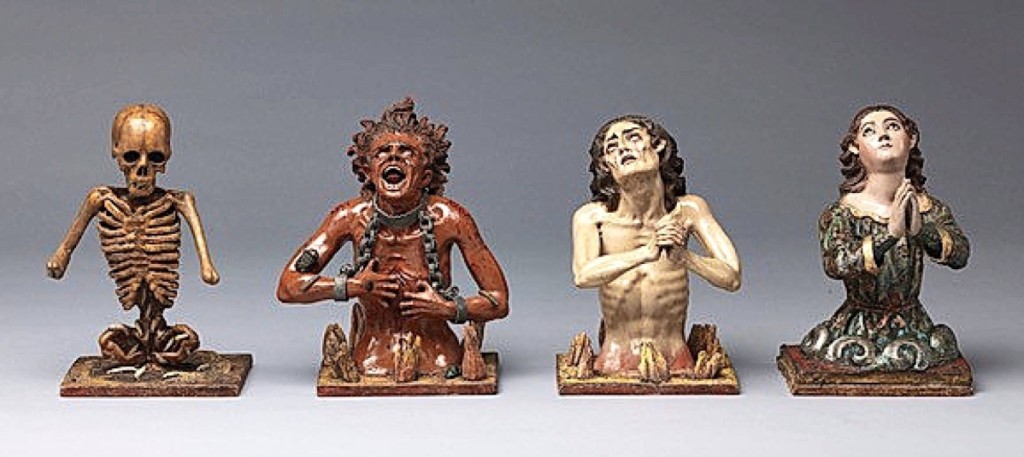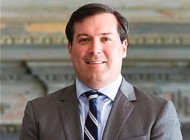The Hispanic Society Museum & Library is debuting a new exhibition of polychrome sculpture this month titled “Gilded Figures: Wood and Clay Made Flesh,” offering a rare glimpse into this major art form originating from the Hispanic world with works dating from 1500 to 1800. It opened not only on the heels of the close of National Hispanic American Heritage Month but also following the museum’s most recent expansion and renovation to date – the brand new East Wing Gallery. Antiques and The Arts Weekly sat down with the museum’s new director, Guillaume Kientz, to talk about this exhibition and the museum’s recent and upcoming renovations.
For those not yet familiar with the museum, can you tell us a bit about its collections of works of art, books and manuscripts?
First of all, it’s one of the oldest museums in New York City. It was created by Archer M. Huntington, heir of a tycoon for the railroad industry. He lived in New York City in the Upper East Side and at a very early age he developed a passion for Spanish and Hispanic art and cultures and decided to collect rare books, manuscripts, works of art, textiles, anything related to the Hispanic world. He collected those and very soon he thought that the right place for this material would be a museum. So he decided to create a museum in upper Manhattan where there was the first subway line. He bought land from Audubon, the famous naturalist, and built the museum to house his collections, free to the public, and he kept collecting, resulting in nearly a half million items in the collection, including rare books and manuscripts, photographs, sculptures, paintings, drawings, prints, textiles, Judaica, Islamic art, archeological material. Over time, my predecessors and their curators increased the collection, and this is where we are now. The buildings were closed in 2017 to start the first phase of the massive renovation plans. This first phase is completed and now we are embarking on the next phase with four exhibitions open since June. We will use this space and as we move forward, we’ll be opening more and more space until the full renovation plan is completed.
What sparked the idea of the ‘Gilded Figures’ exhibition?
It is a great occasion to show part of our collection that in the past may have been overshadowed by more famous pieces like the Goyas, el Grecos, works by Velasquez and others. The paintings compete with the sculptures, so the idea is to show and study our sculptures, and for this we have gathered more than 20 of our most important pieces in this category featuring major Spanish and Latin American polychrome art from the Hispanic world 1500-1800. It’s by far one of the most important Hispanic sculpture collections in the world. It also shows that Huntington was very much ahead of his time because, until recently, Hispanic sculptures were not very well considered; they’re polychrome and wood or clay, not judged to be ‘noble’ enough. Now they’re being reappreciated, such as with the National Gallery London show in 2009, which has created a greater and wider interest for Hispanic sculptures.
There are major works by women artists as well in this exhibition?
One of the strengths of this collection is that we have this great group of works by Luisa Roldán and Andrea de Mena. They were very important female artists in Spain in their time, especially La Roldána, who in her lifetime rose to the position of Royal Sculptor (escultora de cámara). We have the most important of her work outside of Spain.
How were some of these Spanish models used by the Catholic church in its campaign to convert the Indigenous people in Mexico?
It was very much part of a propaganda strategy by the church to make sure it would remain central to people’s lives, and this was true in Latin America under Spanish domination. And they totally used this sculpture to impose the faith and convert people to this. And sometimes what would happen is that they would make Latin Americans saints in order to make more compelling cases. We have that in the show, this embrace of Catholic iconography in the case of Caspicara, an Indigenous Ecuadorian sculptor who exemplified the Quito School movement of the Eighteenth Century Andes, and one of the most important artists. In 2016, the Hispanic Society Museum bought four pieces by him, an important addition to the collection.

Attributed to Manuel Chili, known as Caspicara (Ecuador, circa 1723–Quito 1796), “The Four Fates of Man: Death; Soul in Heaven; Soul in Purgatory; Soul in Hell,” circa 1775, polychromed wood, glass and metal.
One of the most dramatic examples in the exhibition is Caspicara’s ‘Four Fates of Man,’ in which a range of emotions is depicted among the figures. What theological idea was the artist trying to impart?
The salvation. One is damned and screaming, another is burning but maybe saved, and one other is okay – basically depicting the different states of the Christian soul.
You came aboard the institution earlier this year, coming from a curatorial background at the Kimbell Art Museum and before that the Louvre. How do you intend to lead the Hispanic Society in the current environment where institutions worldwide are re-thinking their mission in a rapidly evolving cultural landscape?
Our mission stands very clear – it is serving our community and our collection. It’s very much a part of the Hispanic Society since day one. It’s about giving more voice and more room to figures in Spanish-speaking cultures and communities. It is exactly what Huntington wanted to do when he started, and it’s what we’re doing today.
–W.A. Demers

-885x1024.jpg)




